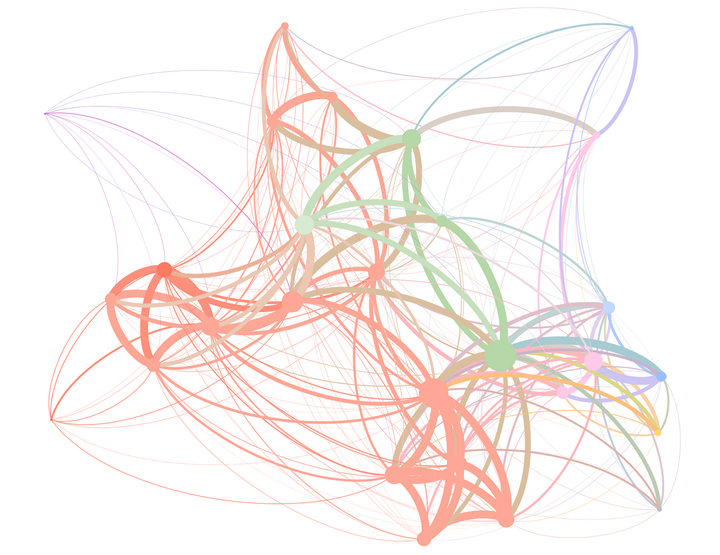& #39;We& #39;re going back to the office because the spontaneous, serendipitous moments that happen there are where ideas are born.& #39;
Yes, and it does happen when your organisation is distributed too. You can find out how by analysing the social networks, like we did... https://abs.twimg.com/emoji/v2/... draggable="false" alt="🧵" title="Thread" aria-label="Emoji: Thread">
https://abs.twimg.com/emoji/v2/... draggable="false" alt="🧵" title="Thread" aria-label="Emoji: Thread">
Yes, and it does happen when your organisation is distributed too. You can find out how by analysing the social networks, like we did...
We asked team members to rate how often they speak to every other person on the team. We then graphed those relationships.
We saw strong clusters for sub-teams, as you might expect, but also that individuals have weak ties to *everyone* on the team.
We saw strong clusters for sub-teams, as you might expect, but also that individuals have weak ties to *everyone* on the team.
Those people with weak ties to everyone are either knowledge-sharers or catalysers. They& #39;re the people that everyone goes to when they have a question, or they& #39;re the person grouping others together and making things happen.
Mark Granovetter wrote & #39;The Strength of Weak Ties& #39; about the role of networks in creating opportunities and cohesion. https://esrc.ukri.org/about-us/50-years-of-esrc/50-achievements/the-weak-ties-of-social-networks/">https://esrc.ukri.org/about-us/...
What& #39;s interesting to note is that these roles happen in between sub-teams. They& #39;re the people looking sideways to create serendipity.
These social dynamics are playing out in distributed work settings, and not only at a team level. These in-betweeners are the glue, holding communities, programmes and whole organisations together. #identifying-roles-within-a-community">https://www.gov.uk/government/publications/community-development-handbook/community-development-handbook #identifying-roles-within-a-community">https://www.gov.uk/governmen...
The in-betweeners use a range of tools to communicate with others, both physical and digital. You can make magic happen online as well as in the office.
My question to leaders: we know that moments in the office can be magical, but what work have you done to understand the social dynamics at play in distributed settings? And how might you support and encourage more people to make the magic happen online *as well as* in-office?
The future of work is hybrid and free-range, without a doubt, so you must acknowledge and design for face-to-face *and* remote interactions.

 Read on Twitter
Read on Twitter


